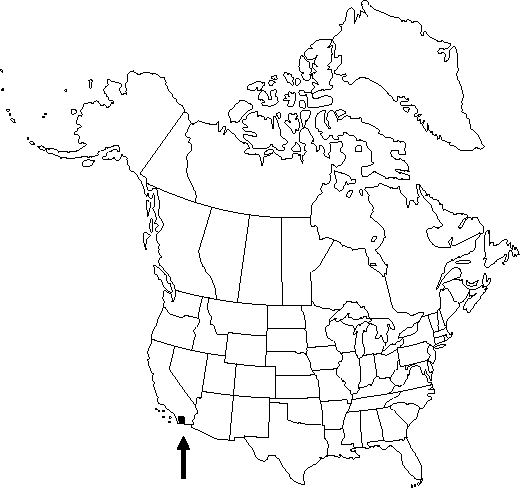Berberis amplectens
Rhodora 39: 376. 1937.
Shrubs, evergreen, 0.2-1.2 m. Stems monomorphic, without short axillary shoots. Bark of 2d-year stems purple, glabrous. Bud scales 3-6 mm, deciduous. Spines absent. Leaves 5-7-foliolate; petioles 1.5-5 cm. Leaflet blades thick and rigid; surfaces abaxially dull, papillose, adaxially dull, ± glaucous; terminal leaflet stalked, blade 4.4-5.5 × 3.1-4.6 cm, 1.1-1.4 times as long as wide; lateral leaflet blades oblong or circular, 1-5-veined from base, base truncate or cordate, margins undulate or crispate, toothed, each with 9-15 teeth 1-3 mm tipped with spines to 1.4-2.4 × 0.2-0.4 mm, apex truncate or broadly rounded. Inflorescences racemose, dense, 25-35-flowered, 3-6 cm; bracteoles membranous, apex obtuse or rounded. Flowers: anther filaments distally with pair of recurved teeth: author had no data available. Berries dark blue, glaucous, ovoid to elliptic, 7-9 mm, juicy, solid. 2n = 28.
Phenology: Flowering spring (Apr–May).
Habitat: Rocky slopes in chaparral and open forest
Elevation: 900-1900 m
Distribution

Calif.
Discussion
Of conservation concern.
Berberis amplectens is endemic to the Peninsular Ranges of southern California. It is resistant to infection by Puccinia graminis.
Selected References
None.